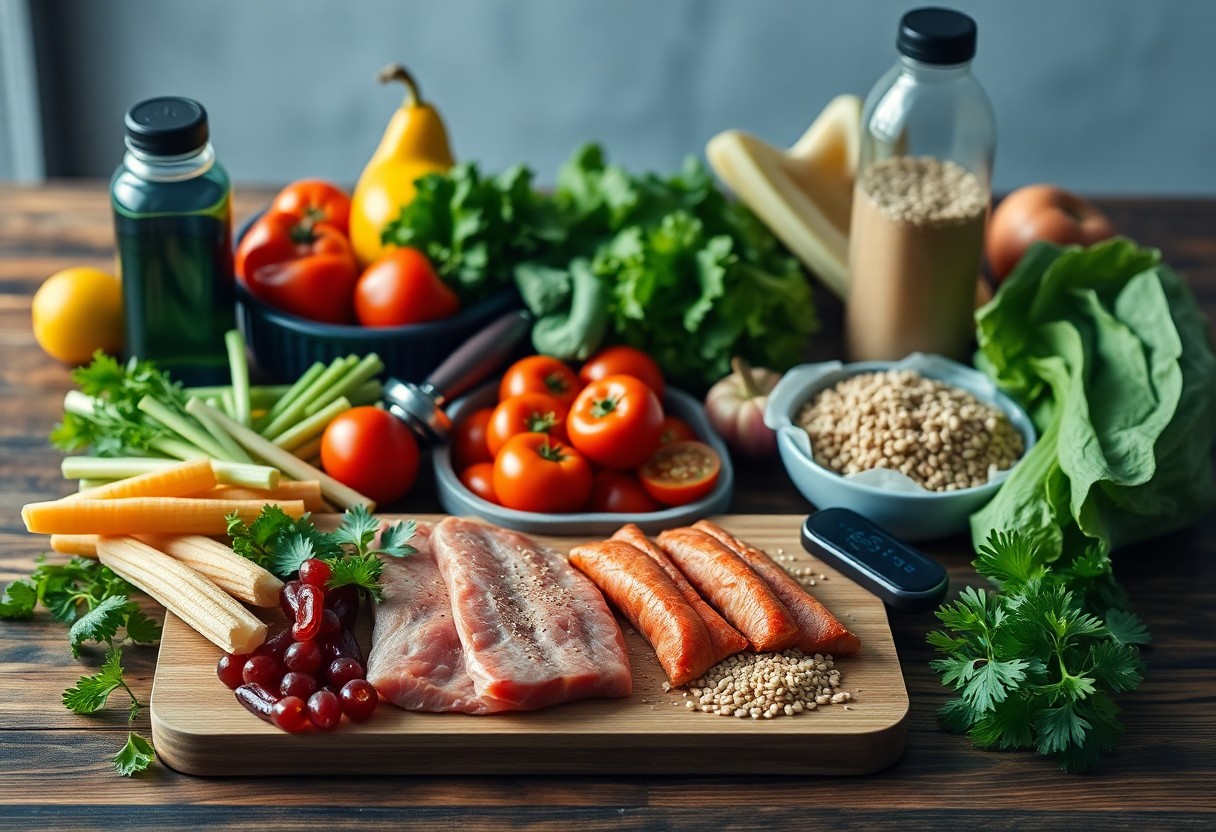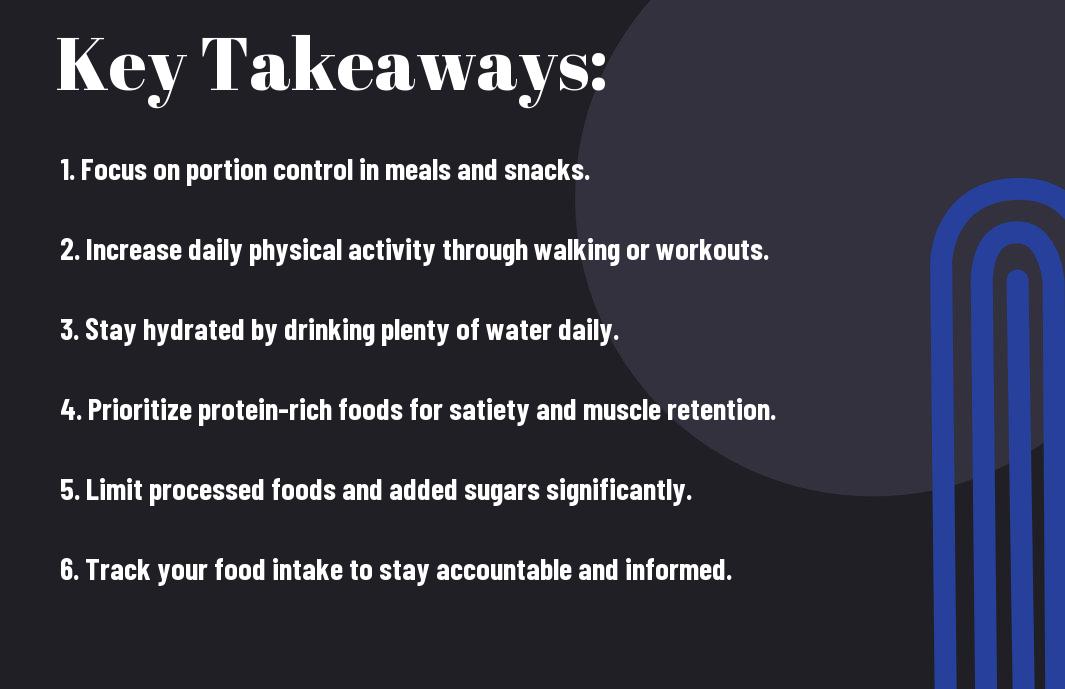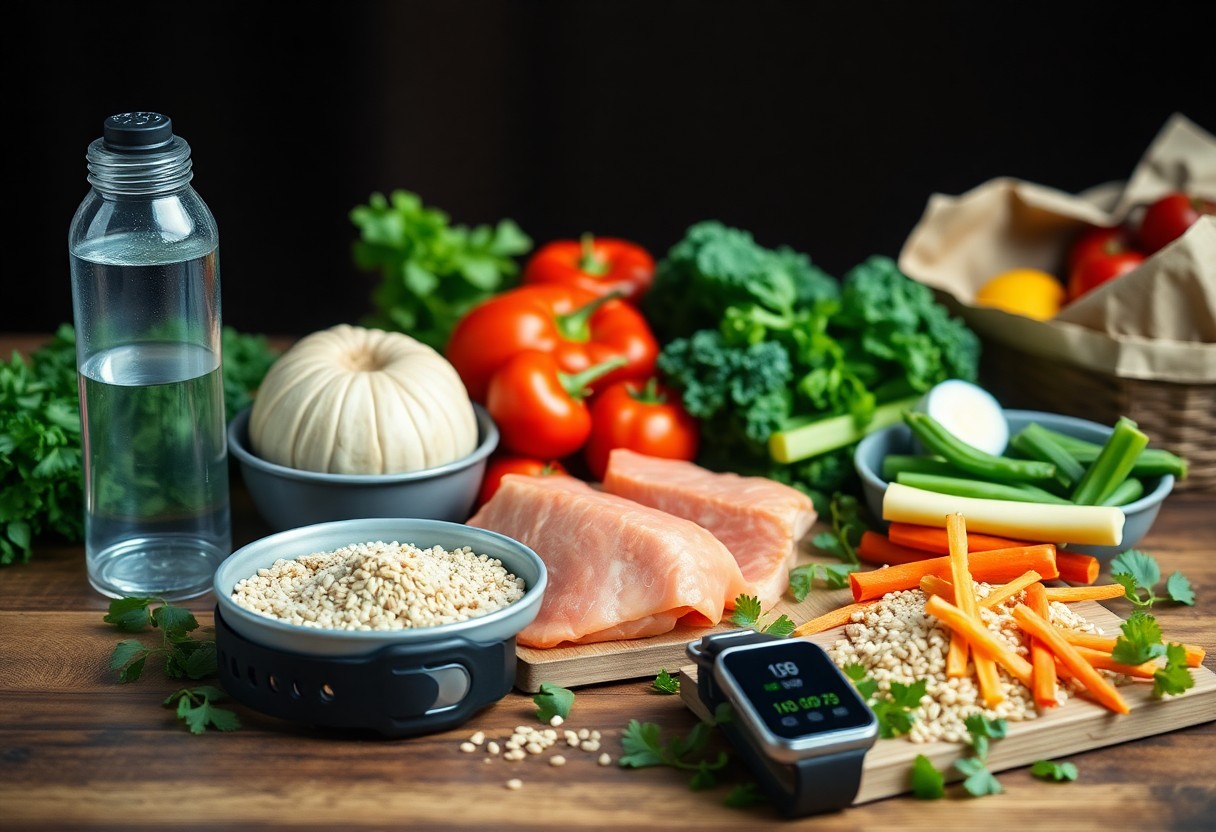Weight management can often feel overwhelming, but shedding 5 pounds of body fat is entirely achievable with the right strategies. In this post, you will discover realistic, actionable steps that can fit seamlessly into your daily routine. From mindful eating habits to efficient exercise techniques, these methods are designed to empower you to take control of your health. By making small, sustainable changes, you can reach your goal weight and maintain it over the long term, fostering a healthier lifestyle that fits your unique needs.

Understanding Body Fat
While many people view body fat negatively, it's imperative to recognize that it plays a vital role in your overall health. Understanding the function and importance of body fat can help you make informed decisions as you work towards shedding those extra pounds.
What is Body Fat?
Any excess adipose tissue in your body is classified as body fat. It serves multiple purposes, including energy storage, insulation, and hormone production. Your body contains different types of fat, including subcutaneous and visceral fat, each contributing uniquely to your physical health.
The Importance of Body Fat in Health
For many, body fat is seen as an adversary; however, it plays several vital roles for your well-being. It assists in hormone regulation, supports cellular structure, and even protects your organs. Moreover, a certain amount of body fat is imperative for maintaining proper body temperature and energy balance.
To maintain optimal health, it's imperative to recognize that not all fat is bad. Healthy body fat levels are necessary for metabolic function and overall wellness. By achieving a balanced body fat percentage, you can enhance your energy, mood, and immune function, making it easier to reach your weight loss goals while prioritizing your health.

Setting Realistic Goals
There's no one-size-fits-all approach to weight loss, and setting realistic goals is vital for success. It's important to define what you wish to achieve within a specific timeframe, considering your lifestyle and commitments. For insights, check this How to lose weight fast: 9 scientific ways to drop fat. Making your goals specific and achievable will help you maintain motivation and ultimately lead to lasting results.
Establishing a Timeline
Along the journey to losing 5 pounds of body fat, establishing a timeline can help keep you focused and accountable. Aim for a gradual weight loss of 1-2 pounds per week, which is considered safe and sustainable. This will not only benefit your health but also make your goals more attainable and less overwhelming.
Measuring Progress Effectively
Between weekly weigh-ins and body measurements, tracking your progress can provide valuable insights into your journey. Use a journal or an app to document your achievements, including changes in energy levels, physical appearance, and how your clothes fit.
Also, consider using multiple metrics to measure progress beyond the scale. Take progress photos, monitor your energy levels, and note improvements in your fitness routine. This holistic approach can help you see the bigger picture, reinforcing your motivation and commitment to your goals.
Nutrition Strategies
Your approach to nutrition plays a significant role in shedding those 5 pounds of body fat. Focus on balanced meals filled with whole foods such as lean proteins, fruits, and vegetables to nourish your body while creating a caloric deficit. For more insights on effective weight loss techniques, check out How to Lose 5 Pounds and Keep the Weight Off.
Caloric Deficit Basics
Along with mindful eating, understanding caloric deficit basics is vital. To lose weight, you need to consume fewer calories than you burn. Tracking your intake through apps or journals can help you identify problem areas and encourage accountability.
Food Choices to Support Fat Loss
After establishing your caloric deficit, prioritize food choices that support fat loss. Incorporate nutrient-dense foods that will keep you satiated, helping you stay on track without feeling deprived.
Choices such as high-fiber vegetables, lean proteins, and healthy fats are beneficial for your weight loss journey. Fiber-rich foods like beans, whole grains, and leafy greens fill you up while providing vital nutrients. Lean proteins like chicken, fish, and tofu can help maintain muscle mass as you lose fat. Healthy fats, found in avocados and nuts, can keep your energy levels stable. By making informed choices, you can create a sustainable eating plan that fuels your body and supports your fat loss goals.
Exercise Techniques
Despite the overwhelming number of fitness options available, finding effective exercise techniques is imperative for shedding body fat. Your routine should blend cardiovascular workouts and strength training to maximize fat loss results. Consistency is key; aim to incorporate various activities that keep you engaged and challenged. By prioritizing both cardio and strength, you will be setting the foundation for a healthier and leaner you.
Incorporating Cardio
One of the most efficient ways to burn fat is through cardiovascular exercise. Engaging in activities like running, cycling, or swimming elevates your heart rate and enhances calorie burning. Aim for at least 150 minutes of moderate-intensity or 75 minutes of vigorous-intensity cardio each week. Incorporating interval training can further boost your results by alternating between high and low-intensity periods, keeping your workout dynamic and effective.
Strength Training for Fat Loss
Training with weights or resistance can significantly enhance your fat loss efforts. By building muscle, you increase your resting metabolic rate, meaning you burn more calories even when at rest. Aim to include full-body strength workouts at least twice a week, focusing on compound movements that engage multiple muscle groups. Exercises such as squats, deadlifts, and bench presses can lead to better results.
Even though strength training is often associated with muscle gain, it plays a pivotal role in fat loss. By incorporating weights into your routine, you not only build lean muscle mass, but you also improve your overall body composition. As your muscle mass increases, your metabolism speeds up, leading to greater calorie burn throughout the day. The key is to challenge yourself with progressive overload, gradually increasing weights or resistance to stimulate further fat loss and development. With consistency and dedication, you will see the results you desire.

Lifestyle Changes
Once again, achieving your weight loss goals involves implementing sustainable lifestyle changes. Focus on making gradual shifts in your daily routines, whether it's swapping unhealthy snacks for nutritious options or incorporating more physical activity into your day. Small adjustments, like choosing to walk or bike instead of driving, can lead to significant, long-term results. Embracing these changes not only helps you shed pounds but also contributes to improved overall health and well-being.
Sleep and Stress Management
After evaluating your eating and exercise habits, it's imperative to prioritize sleep and stress management. Quality sleep allows your body to recover and regulate hormones that influence hunger and appetite. Ensure you establish a consistent sleep schedule and create a calming nighttime routine. Additionally, managing stress through practices like mindfulness or yoga can prevent emotional eating, allowing you to stay focused on your weight loss journey.
Staying Motivated
Motivated individuals consistently pursue their fitness goals by setting clear intentions and celebrating small victories. To stay energized, track your progress with a journal or app, and set specific, achievable benchmarks. Surround yourself with a supportive community, whether it's friends, family, or online groups, to encourage and inspire you during challenging moments. The emotional rewards of your efforts can significantly boost your motivation to continue on this path.
Staying motivated may require a strategic approach to keep your enthusiasm alive. Visualize your goals by posting inspiring quotes or images in prominent places like your fridge or workspace. Change up your workout routine or try new classes to prevent boredom. When facing setbacks, remind yourself of the low points you've overcome and the ultimate reward awaiting you. By maintaining a positive mindset and focusing on progress, you can stay committed to shedding those 5 pounds of body fat.

Monitoring and Adjusting Your Plan
For effective weight loss, monitoring your progress is important. Keep a food and exercise diary to track your intake and activity levels. Utilize apps or wearable devices that can provide feedback and insights on your routine. Additionally, if you're looking for quick tips, check out How to Lose 5 Pounds in 5 Days. Adjust your plan as needed to stay on track towards shedding those 5 pounds of body fat.
Recognizing Plateaus
For many, experiencing a weight loss plateau can be discouraging, but it is a normal part of the process. Your body often adapts to changes, leading to temporary stalls in progress. By understanding these plateaus, you can strategize effectively to keep moving forward.
Tweaking Your Strategy
One way to overcome a plateau is by tweaking your strategy. You can adjust your calorie intake, increase your exercise intensity, or change your workout routine. Adaptation is key to continuing progress.
Tweaking your strategy may involve experimenting with different types of workouts or altering your macronutrient ratios. For instance, if you've been doing mostly cardio, try incorporating strength training to build muscle and boost metabolism. Changing your meal plan can also provide the fresh perspective your body needs to resume fat loss. Stay flexible and be willing to try new approaches to find what works best for you.
Conclusion
Conclusively, implementing realistic strategies to shed 5 pounds of body fat requires a balanced approach that incorporates nutrient-dense food choices, regular physical activity, and sustainable lifestyle habits. By prioritizing whole foods, staying hydrated, and incorporating strength training, you can create an effective plan that fits seamlessly into your daily routine. Additionally, tracking your progress and adjusting your methods as needed will help you stay motivated and focused on your goal. Embrace these practices, and you will pave the way towards achieving your weight loss objectives healthily and sustainably.
FAQ
Q: What are some effective dietary changes to help lose 5 pounds of body fat?
A: To lose 5 pounds of body fat, consider making dietary adjustments such as incorporating more whole foods like fruits, vegetables, lean proteins, and whole grains into your meals. Reducing your intake of processed foods, sugary drinks, and high-calorie snacks can also be beneficial. Additionally, tracking your daily caloric intake through apps or journals may provide insights into your eating habits, helping you make informed choices that align with your weight loss goals.
Q: How important is exercise in shedding 5 pounds of body fat?
A: Exercise plays a significant role in losing body fat, as it helps burn calories and boosts metabolism. A combination of cardiovascular workouts—like running, cycling, or swimming—and strength training is often recommended. Aim for at least 150 minutes of moderate aerobic exercise each week, along with two or more days of strength training to build muscle mass. This approach can enhance fat loss while promoting overall fitness and health.
Q: How can I stay motivated throughout my weight loss journey?
A: Staying motivated can be achieved through setting realistic and achievable goals, tracking your progress, and celebrating small successes along the way. Joining a support group or finding an accountability partner can also help keep you engaged and committed. Additionally, exploring new healthy recipes, trying different workout classes, or using fitness challenges can make the journey more enjoyable and keep motivation levels high.
Q: Are there specific foods that can aid in fat loss?
A: Yes, certain foods can support fat loss due to their nutritional profiles. Foods high in protein, like chicken, fish, legumes, and eggs, can promote satiety and preserve muscle mass during weight loss. Additionally, foods rich in fiber, such as whole grains, fruits, and vegetables, can help you feel full longer. Healthy fats found in avocados, nuts, and olive oil can also be incorporated in moderation, as they can aid in keeping you satisfied while supporting your weight loss efforts.
Q: How long can I expect it to take to lose 5 pounds of body fat?
A: The timeline for losing 5 pounds of body fat varies for each individual but generally, a safe and sustainable rate of weight loss is about 1 to 2 pounds per week. This means you could potentially achieve this goal in 2 to 5 weeks, depending on your adherence to dietary adjustments and exercise routines. It's important to approach weight loss with a long-term mindset focused on health, rather than trying to rush the process.
Disclaimer: The content on this blog is for informational purposes only and should not be considered medical advice. Always consult a healthcare professional before making any health, fitness, or supplement decisions. This blog may contain affiliate links, and we may earn a commission on purchases made through them.





0 Comments